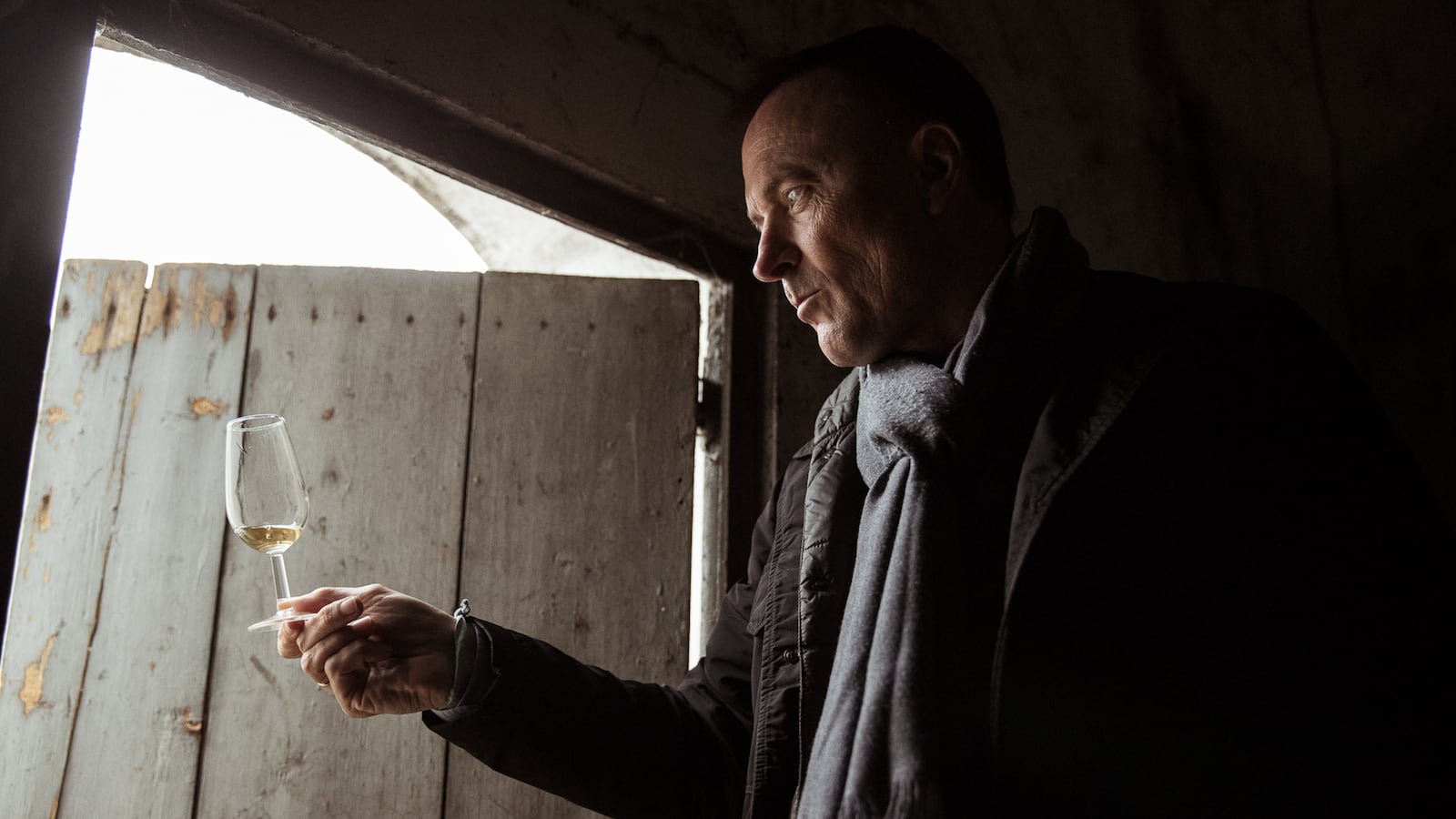Sherry is dying a slow death in front of our eyes.
It’s now hard to believe that it was once a staple in bars and cocktail recipes, but in fact the Sherry Cobbler was truly a sensation in the 1800s. “The great feature of civilization is—a sherry cobbler,” stated an article in The Brooklyn Daily Eagle from January 1845. The article went on to lament the fact that no one knows who created the drink. “Yes, he who first taught rude man to lay sparkling crystals of ice beneath the delicious Sherry, and to flavor the liquid with sharp slices of lemon, and then to imbibe it, not by coarse Thracian draughts, but gently, lightly, and playfully through rustic straw, is totally unknown.”
But sales of the fortified wine have recently dropped in the U.S., according to the IWSR Drinks Market Analysis, by a terrifying 40-percent from 2005 to 2018. And worse, the category is forecasted to continue to shrink over the next three years.

However, in a bizarre twist of fate, sherry producers, called bodegas, are still busy, since they’ve found another lucrative client for their liquor: whiskey makers.
No matter where you make whiskey, it usually has to be aged in a barrel. And traditionally a number of Scotch brands would buy used barrels from sherry makers and fill them with new whisky. The wood would give the liquor a delicious raisin note and an enjoyable dryness.
The other big supplier of barrels are American whiskey makers. Bourbon and rye can only be aged in a brand-new barrel. Once they’re used by distillers and emptied, they’re sent around the world—from Mexico to the Caribbean to Ireland to Scotland.

Thanks to the whiskey boom over the last two decades and the meteoric rise of single malt Scotch, the demand for sherry barrels has exploded. It’s now common for a brand to buy barrels from a Spanish cooperage and pay a bodega to fill them with sherry and warehouse them for several years. The barrels are then emptied—the bodega keeps the sherry—and are shipped to Scotland where they’re filled again with Scotch.
But the most sought-after sherry barrels are the ones that have been used for decades—some are even a 100 years old. These veterans have been part of a solera system, where sherry is transferred from one barrel to the other, blending new and old wine. Each barrel is never completely emptied before it’s refilled.
Another thing that is contributing to the popularity of sherry casks is that in an attempt to satisfy the demand for new products and to innovate, a number of whiskey brands now age their spirits in a variety of barrels. So, one whiskey may spend time in two or, even, three different kinds of casks. And it’s not just Scotch distillers who are doing this but also American whiskey makers who are increasingly maturing their single malts in a range of casks.

One popular combination is using both a new American oak barrel and a sherry cask. The Seattle-based Westland has been doing this since 2014 for its Sherry Wood American Single Malt Whiskey, which has won numerous awards. The distillery uses sherry barrels since “it’s part of the tradition of single malt,” says Westland Distillery's master distiller Matt Hofmann. “From day one, I wanted to do it.”
Hofmann says getting sherry barrels wasn’t that easy at first before they finally found a broker who could get them a set of truly vintage casks that are nearly a century old. “And they look like it,” he says, and “they’re terrifying to move around.”
But he’s quick to admit that the use of former sherry casks is “unsustainable,” since traditionally sherry makers would only retire one after years and years of service. The barrels are now worth so much, that wineries are closing and selling their solera systems to the highest bidder.
Westland Distillery is working with a number of vineyards to help them keep making high-quality wine. “It’s great that our industry can help sustain and even restore the sherry wine business but what’s important to consider is how that is done,” he says. “If our industry’s sole intention is to simply replicate flavor profiles of the past with no regard for the quality of the wine currently being made, we’re missing the real opportunity to play a part in advancing Andalucia’s sherry tradition through varietal typicity and terroir-driven approaches. The business of sherry-matured whiskies supports bodegas and their bottom lines, but if in the end all they’re left with is low-grade sherry—or worse yet, vinegar—we’re missing the point.”

It only seems fair that whiskey is helping to keep alive the sherry industry, since it played a significant role is its downfall. Let me explain.
Back in the late 1800s, a tiny insect, called phylloxera, destroyed vineyards across Europe. The sherry producers were, of course, affected and drinkers were forced to explore their other alcohol options.
Whiskey makers in Scotland, Ireland and America seized the moment and introduced their spirits around the world. Historically, whiskey wasn’t as popular as Cognac, rum, gin, port or sherry. But even after a phylloxera-immune root stock was found in Texas and vineyards across Europe were replanted, whiskey had taken hold and established itself as a bestseller.
As whiskey’s fortunes climbed ever higher, sherry had a harder time finding a place in the modern world.
But drinking trends come and go—who could have predicted the rebirth of classic punch?—and it’s certainly more than possible that sherry will stage an epic comeback. In the meantime, whiskey’s success will certainly keep the bodegas busy.

